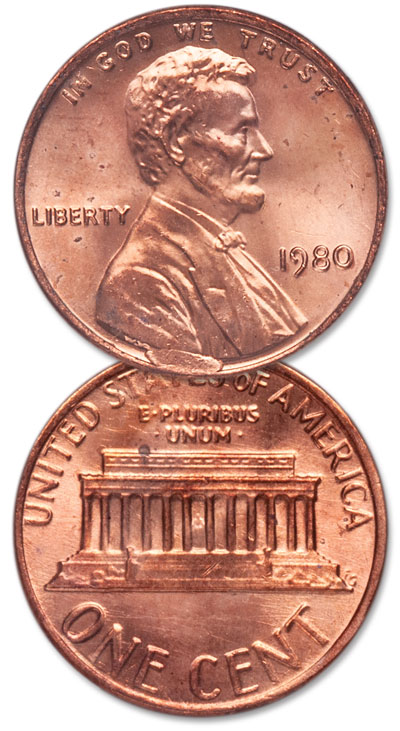Something to chew on…
What are coin “cuds” and die crack errors – and how do they form?
Last updated:

Have you ever come across a coin with what looks to be an extra line or “blob” of metal on its surface? They’re not seen often, but these are known as marginal die breaks, or “cuds”. This is a coinage error that’s created when a die (used to strike a coin) is missing a piece near the rim. Given the immense pressure used to strike coins, the metal from the planchet (or coin blank) flows into the negative area left by the missing piece of the die.
Given the strict quality control measures in place at the U.S. Mint (read more about how modern coins are made here), it’s no surprise that errors like these aren’t found often on modern coins. If they do occur, most times they’re caught and destroyed before ever having a chance to make it into the hands of collectors.
But still…
Last summer, it was reported that a 10-year-old collector was lucky enough to find several 2022-P Wilma Mankiller quarters with a retained cud on the obverse.1 What a great discovery!
Die Crack Errors

A close relative of the marginal die break is the die crack error. Instead of a piece of metal breaking away from a die completely, this error results when a die simply splits (or cracks). Instead of a “blob” of metal, these will show as a raised line on the coin.
There are a number of historic VAM Morgan dollars that are identified as die breaks. Some even have fun nicknames, like “Scarface” (on 1888-O Morgans) and “Wounded Eagle” (on the 1881-S coins). VAMs are considered varieties, not errors, and are named for researchers and silver dollar enthusiasts Leroy Van Allen and A. George Mallis. In 1971, the two published their research, listing each variety by date and mint mark in their book, The Comprehensive Catalog and Encyclopedia of Morgan and Peace Dollars.
No matter your interests, there’s no doubt that error coins like die breaks and cuds can add depth and dimension to any collection. Beyond the die breaks and die cracks covered here, there are many other types of error coins that are sought after by collectors. Do you collect error coins? If so, what’s your favorite piece?
This article was written by Kierstin S.
Since 2000, Kierstin has enjoyed sharing her love of collecting with folks like you.
Sources
1 Gilkes, Paul, “Ten-year-old finds cud error Mankiller quarters” (Coin World), July 28, 2022. Accessed January 26, 2023. https://www.coinworld.com/news/us-coins/ten-year-old-finds-cud-error-mankiller-quarters




I have nickels dimes and quarters
It sounds like you’re building a nice collection of coins! Thanks for stopping by.
I have a 1922 where penny my name is Pedro Heriberto Perez Polafox
Hi Pedro, thanks for stopping by. To find the value or to sell your US coins or notes, you can contact our Coin Buying Department.
https://www.littletoncoin.com/shop/Coins-To-Sell
They are also available by phone from 8:00 AM until 4:00 PM ET, Monday through Friday. The telephone number is 1-877-857-7850.
I’d like to know where you got your information on the prices for the 1944 S & D pennies. I looked on eBay and they were only selling for $3 at most. The 1944 with no added letter were going for around $2000. So where did you come up with $34K-1.1 million?
Hi Charles, Our prices are based on many things including, but not limited to, our cost to acquire the item/s.
You may compare Littleton’s prices with other companies’ or individuals and find that some coins are priced lower elsewhere. However, the only way to truly compare prices is to place the two coins side by side and do an actual comparison to see the difference in quality. A coin described by some as Uncirculated may only be graded “About Uncirculated” or even a polished “Extra Fine”. In fact, more than half the coins Littleton examines are rejected because they do not meet our quality standards.
Regarding the prices we charge, our prices reflect the service we provide our customers – not merely the value of the coin itself. We have not yet found a way to have the lowest prices and at the same time be able to offer the widest inventory and best service for which Littleton is known. It is up to the individual customers to decide the value of these services based on their own needs. For over 75 years, our business has been built on satisfying customers. We strive to provide each collector with the best that is possible in the numismatic field.
I have a silver 1944 wheat penny. I hear so many different things about the coin . Don’t know what to believe how much. Its worth. I look on all these sites and it’s confusing. I know how to grade them but who’s knows if I am right. I would like to sell but need help trying to figure out it they are worth any thing. Cause I have some more old money. Help
Hi Pamela, Are you sure it’s not a 1943 Cent? In 1943 the Lincoln Cent was made of zinc coated steel. A lot of folks mistake them for silver. If it’s truly a 1944 cent that looks silver, I’d suggest you find a local reputable coin dealer who can look at the coin up close to determine what you have. Good luck!